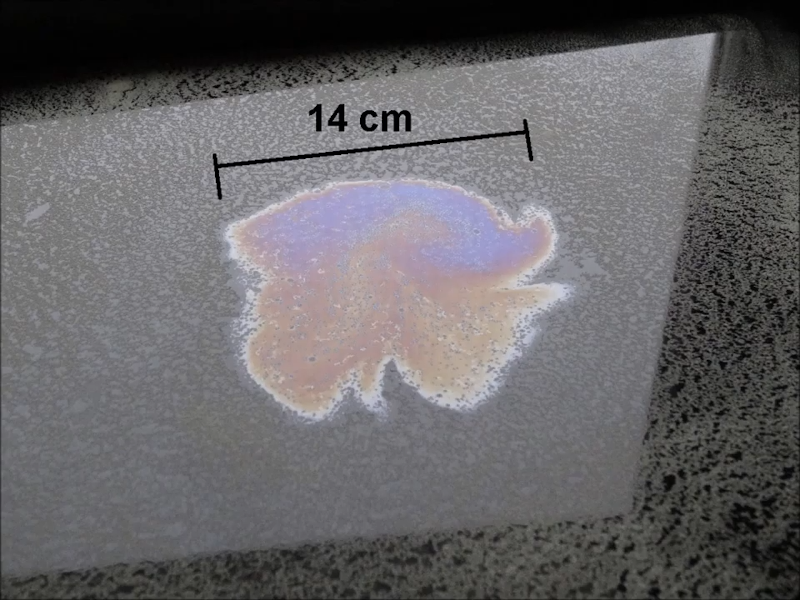Measuring an Atom

Do you need a well-equipped lab to measure the size of an atom (German, machine translation)? According to [stoppi], no. You need sunflower oil, some bear moss spores, and a …read more Continue reading Measuring an Atom
Collaborate Disseminate

Do you need a well-equipped lab to measure the size of an atom (German, machine translation)? According to [stoppi], no. You need sunflower oil, some bear moss spores, and a …read more Continue reading Measuring an Atom
The flaw, in Intel VTune Profiler, could enable privilege escalation. Continue reading Intel Fixes High-Severity Flaw in Performance Analysis Tool
Intel patches three flaws that could allow a local attacker to execute arbitrary code on impacted systems. Continue reading Intel Smart Sound Tech Vulnerable to Three High-Severity Bugs
Between smartphones and tablets, computing is becoming increasingly mobile in nature. It used to be that everyone had a desktop computer, then laptops became the norm, and now many people don’t have anything beyond their mobile device. Unless you’re the kind of person who actually needs the power and versatility offered by a “real” computer, mobile devices are simply a more convenient option to browse the web and consume content.
But what if your needs are somewhere in the middle? You want an x86 computer and full operating system, but you also want something that’s more mobile than a tablet? …read more
The Engineering and Physical Sciences Research Council awarded a remarkable photograph its overall prize in science photography. The subject of the photograph? A single atom visible to the naked eye. Well, perhaps not exactly the naked eye, but without a microscope. In the picture above (click here to enlarge), the atom is that pale blue dot between the two needle-like structures.
You probably learned in school that you couldn’t see a single atom, and that’s usually true. But [David Nadlinger] from the University of Oxford, trapped a positively charged strontium atom in an ion trap and then irradiated it with …read more
Continue reading Photograph of Single Atom Captured with a Plain Old Camera
Python is the Arduino of software projects. It has a critical mass of libraries for anything from facial recognition and neural networks to robotics and remote sensing. And just like Arduino, I have yet to find the killer IDE for Python. Perhaps I just haven’t tried the right one yet, but it could be that I’m just doing Python wrong.
I’m a Linux-only type of a guy so using IDLE for Python is a natural fit. It’s in the repositories for super quick and easy install and there’s basically zero configuration to be done. Generally …read more
In the electronics industry, the march of time brings with it a reduction in size. Our electronic devices, while getting faster, better and cheaper, also tend to get smaller. One of the main reasons for this is the storage medium for binary data gets smaller and more efficient. Many can recall the EPROM, which is about the size of your thumb. Today we walk around with SD cards that can hold an order of magnitude more data, which can fit on your thumb’s nail.
Naturally, we must ask ourselves where the limit lies. Just how small can memory storage get? …read more
In the electronics industry, the march of time brings with it a reduction in size. Our electronic devices, while getting faster, better and cheaper, also tend to get smaller. One of the main reasons for this is the storage medium for binary data gets smaller and more efficient. Many can recall the EPROM, which is about the size of your thumb. Today we walk around with SD cards that can hold an order of magnitude more data, which can fit on your thumb’s nail.
Naturally, we must ask ourselves where the limit lies. Just how small can memory storage get? …read more
The most interesting market for Intel in recent years has been very, very small form factor PCs. ARM is eating them alive, of course, but there are still places where very small and very low power x86 boards make sense. The latest release from SolidRun is the smallest we’ve seen yet. The SolidPC Q4 is one of the smallest x86 implementation you can find. It’s based around the MicroSoM, a module even smaller than a Raspberry Pi, and built around a carrier board that has all the ports you could ever want from the tiniest PC ever.
The SolidPC Q4 …read more